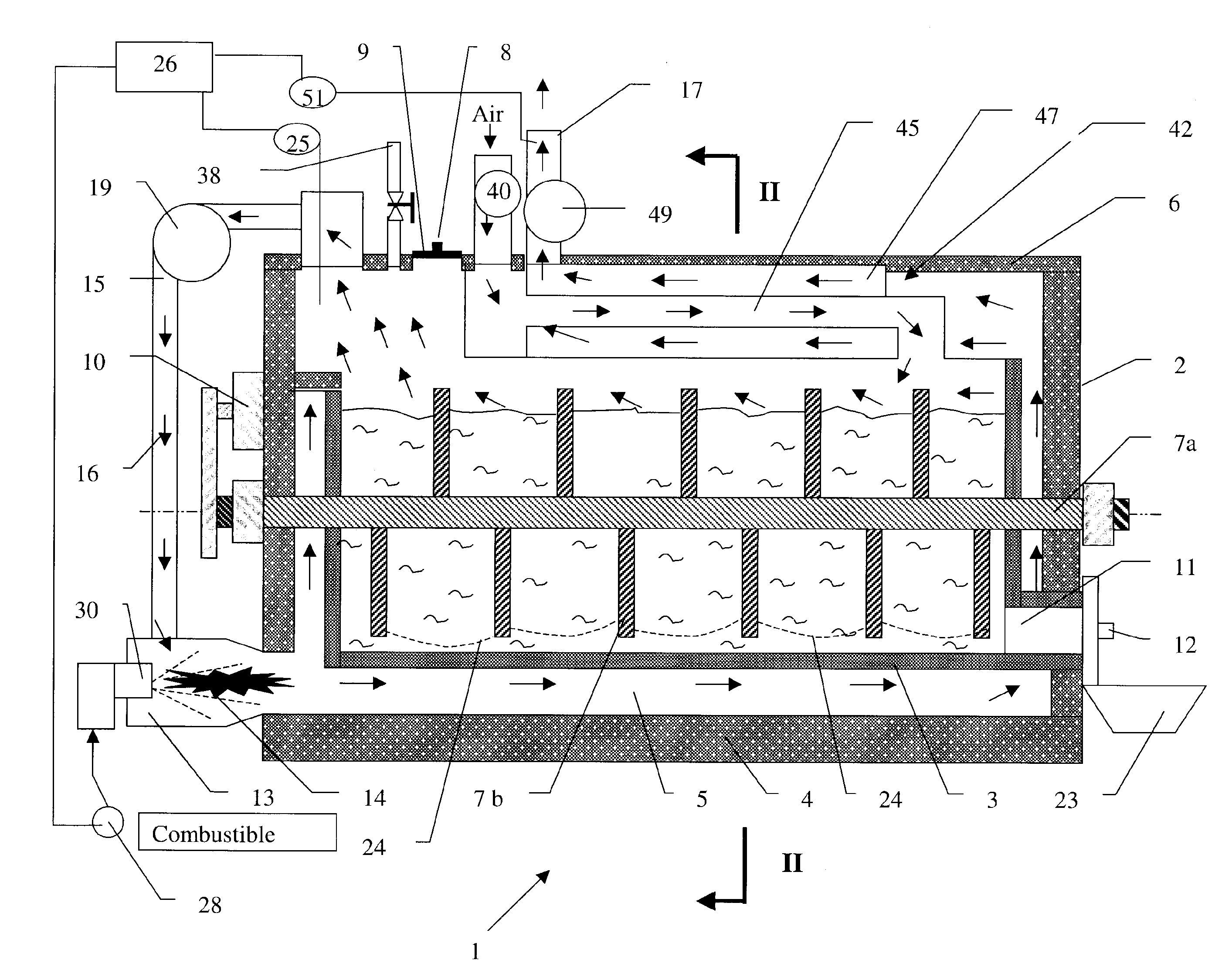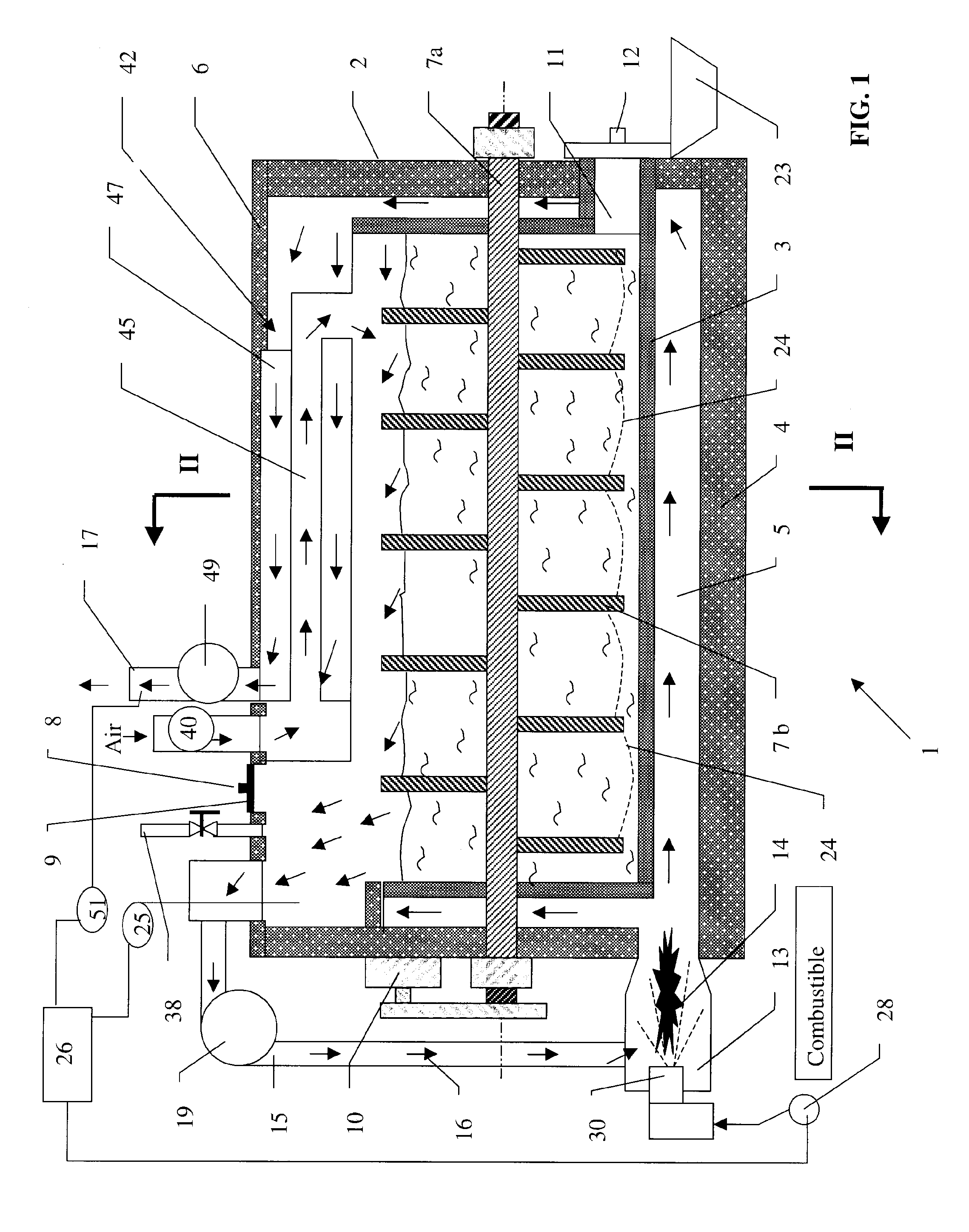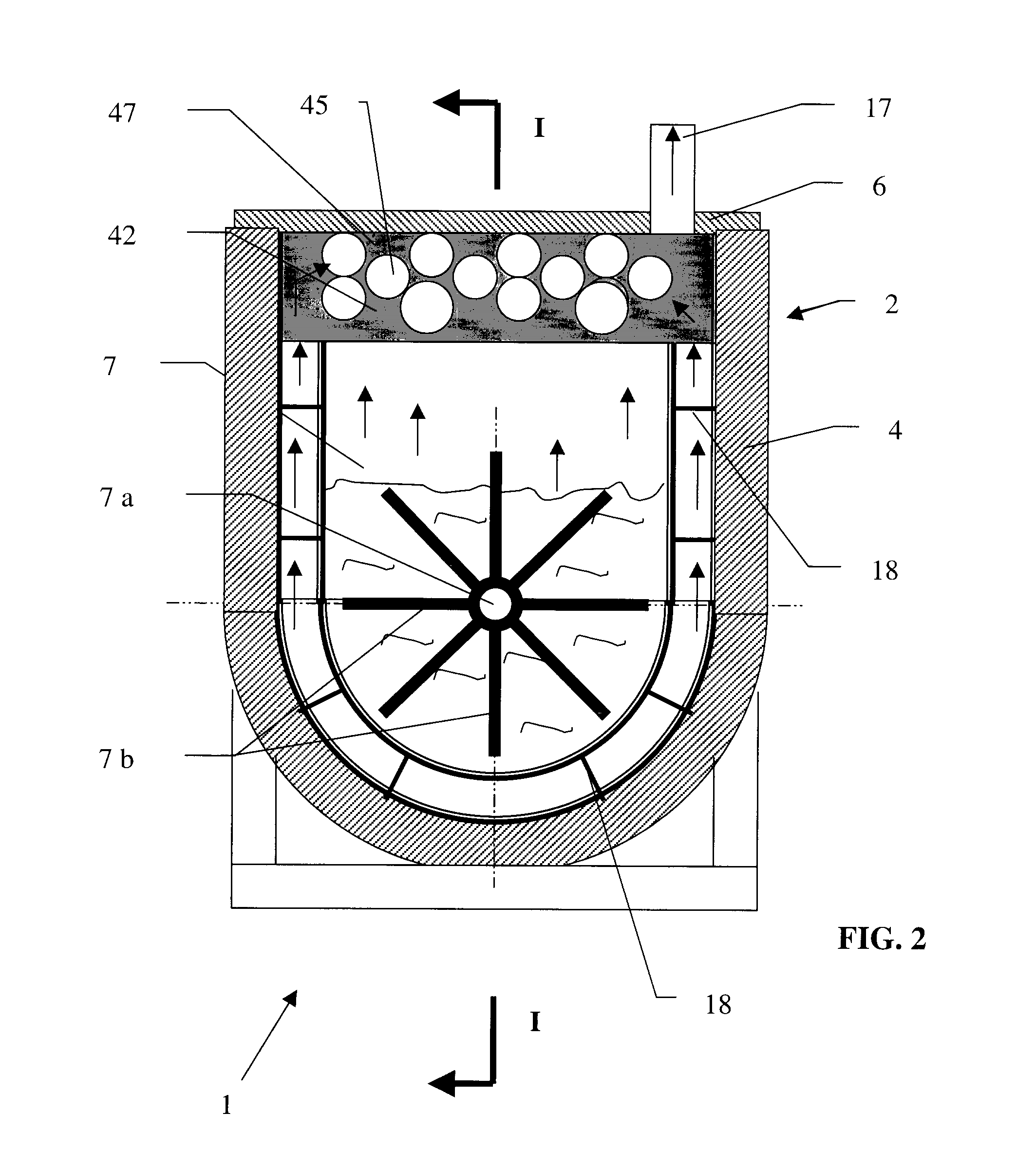Apparatus for the thermal treatment of organics materials and method therefor
- Summary
- Abstract
- Description
- Claims
- Application Information
AI Technical Summary
Benefits of technology
Problems solved by technology
Method used
Image
Examples
Embodiment Construction
[0030]As can be seen from the drawings, the apparatus 1 of the present invention is constituted as a horizontally elongated structure 2 which is formed with a semi-cylindrical bottom and a pair of vertical longitudinal walls rising from this semi-cylindrical bottom and closed at its axial ends. The trough-shaped tank 2 is also closed at its top by a horizontal wall 6. Thus the tank generally has a horseshoe cross-section when taken transversely with respect to the horizontal axis of the tank.
[0031]The tank 2 is a double wall structure, i.e. comprises an inner wall 3 of a material which is a good heat conductor, e.g. a metal or metal alloy of copper, steel, stainless steel or aluminium, while the exterior wall 4 is composed of a thermally insulating material, e.g. a refractory, ceramic or the like.
[0032]A space 5 is provided between the two walls 3 and 4 along the bottom and longitudinal end sides of the tank 2 and constitutes a space or duct 5 for circulating the heated air which is...
PUM
| Property | Measurement | Unit |
|---|---|---|
| Temperature | aaaaa | aaaaa |
| Electrical conductor | aaaaa | aaaaa |
| Heat | aaaaa | aaaaa |
Abstract
Description
Claims
Application Information
 Login to View More
Login to View More - R&D
- Intellectual Property
- Life Sciences
- Materials
- Tech Scout
- Unparalleled Data Quality
- Higher Quality Content
- 60% Fewer Hallucinations
Browse by: Latest US Patents, China's latest patents, Technical Efficacy Thesaurus, Application Domain, Technology Topic, Popular Technical Reports.
© 2025 PatSnap. All rights reserved.Legal|Privacy policy|Modern Slavery Act Transparency Statement|Sitemap|About US| Contact US: help@patsnap.com



